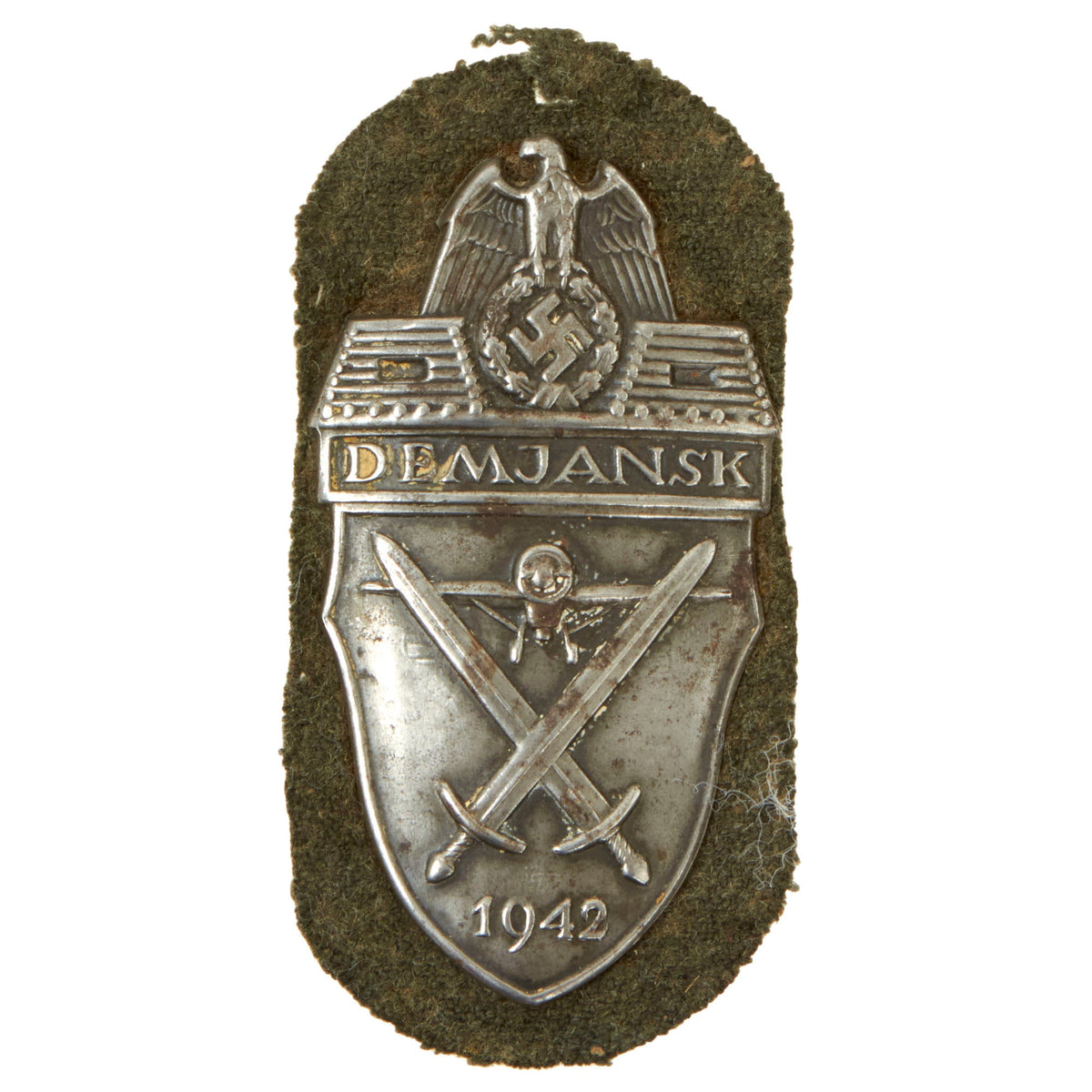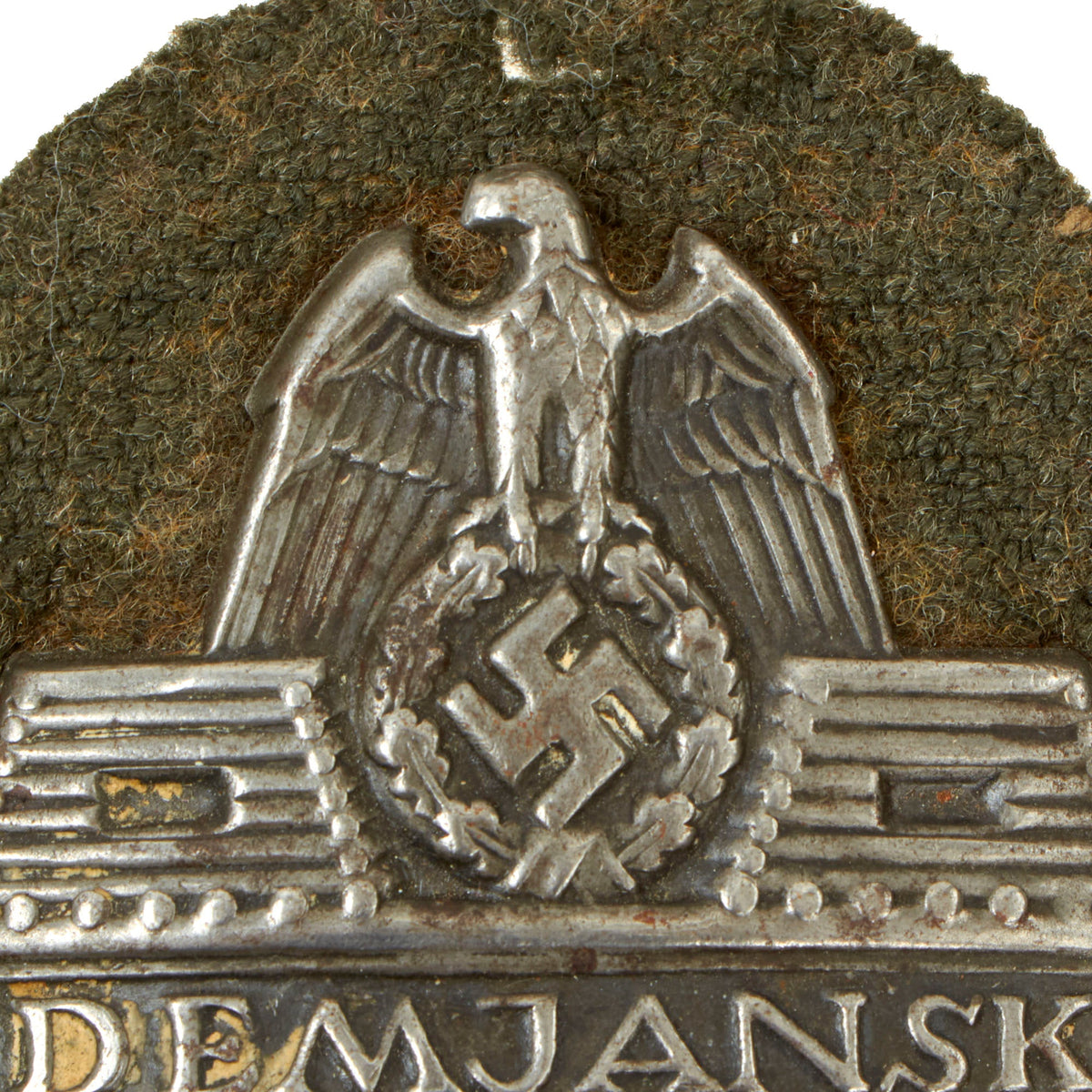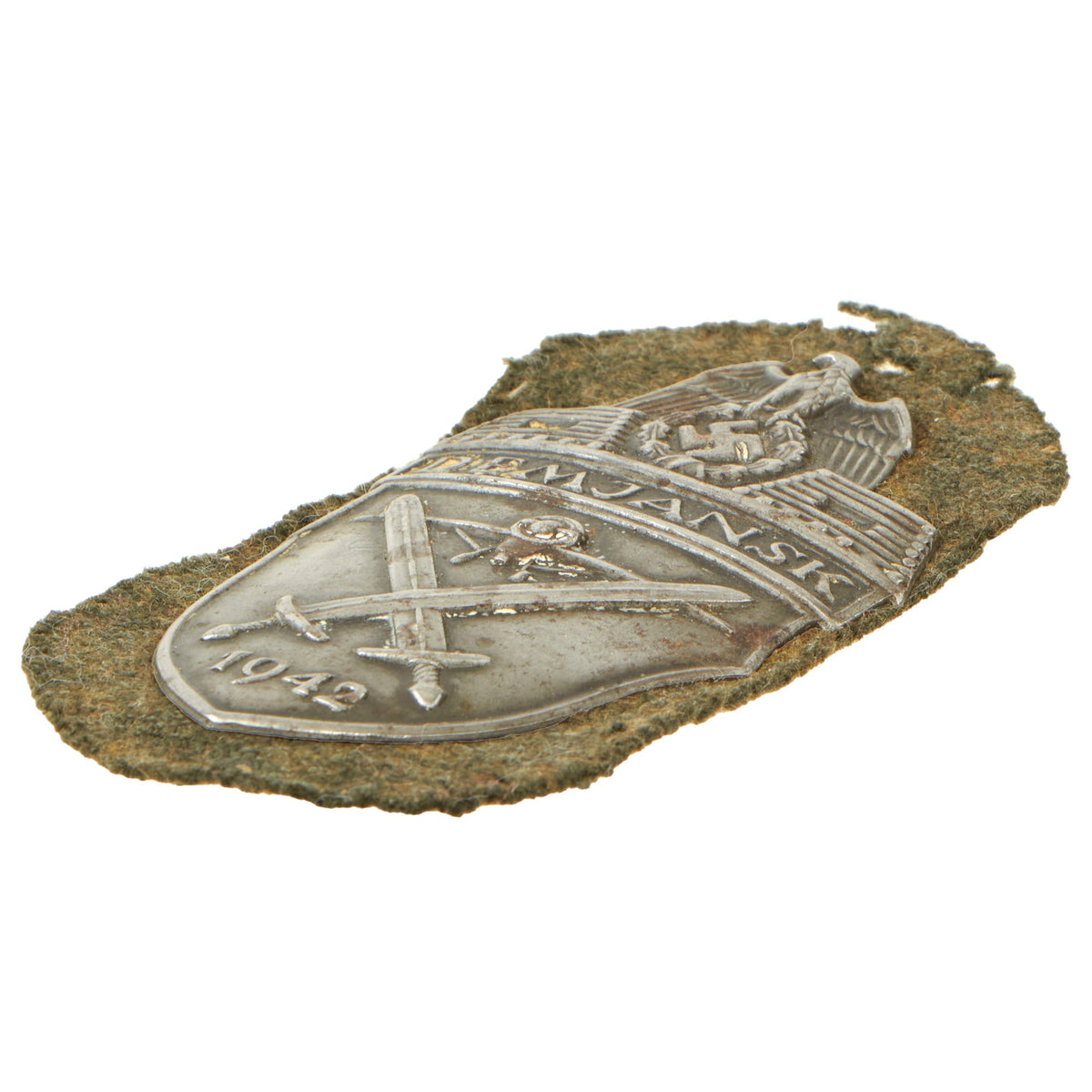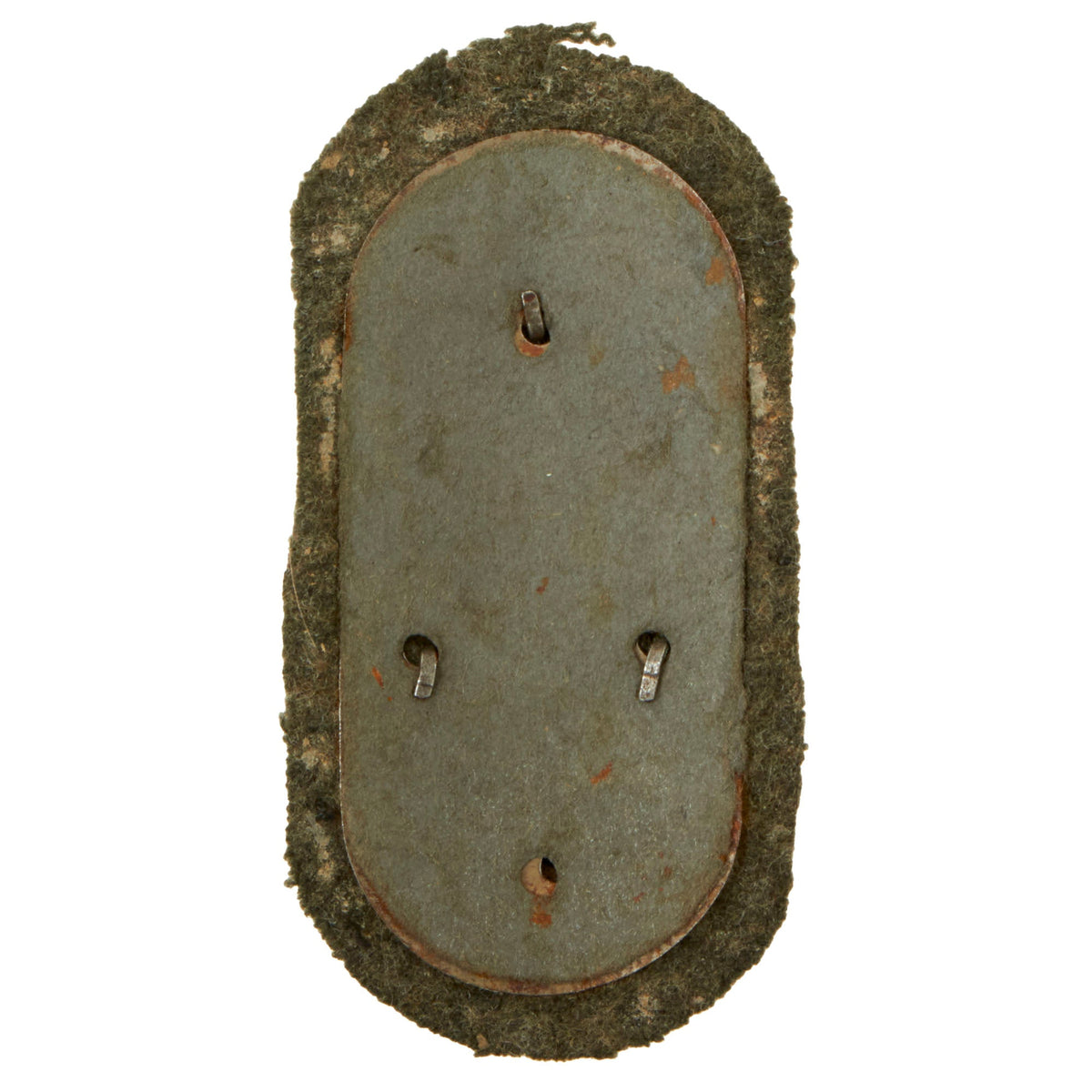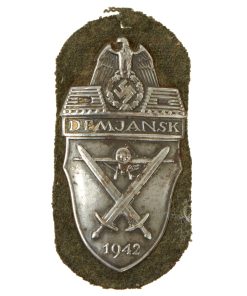Original German WWII Heer Army Demyansk Shield Decoration with Back Plate & Fabric – “Missing Log” Variant Original Items
$ 695,00 $ 208,50
Original Item: Only One Available. The Ärmelschild Demjansk (Demyansk Arm Shield) was a World War II German military decoration awarded to Wehrmacht personnel who fought in the Demyansk pocket on the Eastern Front in the early months of 1942. The pocket of German troops had been encircled and cut off by the Red Army around Demyansk (Demjansk), south of Leningrad, and was successfully defended with the aid of an airbridge. The shield was instituted on 25 April 1943 by Adolf H and was not bestowed after 1 July 1944.
This is a very good example of the Demyansk Shield Award, complete with the original backing plate and Feldgrau fabric, indicating issue to the Heer Army. It even still has a lot of the original paper backing on the steel backing plate! It definitely looks to have seen use, and we can see stitch marks and soiling on the fabric. There is also wear, oxidation, and some paint on the steel shield itself, which still shows some of the original oxide wash.
This example is a desirable “Missing Log” variant, where the second log from the right on the bottom of the right pillbox is stamped poorly. This is the first example of one of these rare badges we have had, and do not expect to see another anytime soon.
Ready to add to your collection and display!
The shield was die-struck and produced in silver-washed zinc and later in plain zinc. It features at its apex an eagle with swooped down wings clutching a laurel wreath that surrounds a SWAZ. This is flanked by two log pillboxes with gun ports, with “DEMJANSK” in capitals below. The central portion of the shield features a head-on single engine aircraft behind two crossed swords and, at the base, the year “1942”. Two minor variations of the aircraft’s propeller exist with either a curved or straight propeller. There is also a variant where one of the bottom log second from the right on the pillbox is missing, called the “missing log” variant. The shield measures 51mm wide and 92mm in height.
It was affixed to the upper left sleeve of the uniform via a cloth that matched the colour of the uniform of the recipient:
– Light green-grey (field-grey) for Heer (army)
– Blue for Luftwaffe (air force)
– Black for Panzer (armoured) units
– Field-grey for Waffen-SS
Where the recipient received more than one campaign shield, the earlier was worn above any later awards.
After an initial ban, the Federal Republic of Germany re-authorised the wear of many World War II military decorations in 1957. These included the Demyansk Shield, re-designed by removing the eagle and SWAZ emblem at the top of the badge. Members of the Bundeswehr could wear the shield on the ribbon bar, represented by a small replica of the award on a field grey ribbon.
Criteria for award
The qualifying period was 8 February to 21 April 1942. The requirement for ground units was honorable service in the besieged area for 60 days, or a shorter period if wounded. Luftwaffe personnel required 50 combat or re-supply missions over the besieged area. Approximately 100,000 service personnel qualified for the shield, with up to five examples issued to each recipient, enabling them to be permanently attached to each tunic and greatcoat.
Fast Shipping with Professional Packaging
Thanks to our longstanding association with UPS FedEx DHL, and other major international carriers, we are able to provide a range of shipping options. Our warehouse staff is expertly trained and will wrap your products according to our exact and precise specifications. Prior to shipping, your goods will be thoroughly examined and securely secured. We ship to thousands clients each day across multiple countries. This shows how we're dedicated to be the largest retailer on the internet. Warehouses and distribution centres can be located throughout Europe as well as the USA.
Note: Orders with more than one item will be assigned a processing date depending on the item.
Before shipping before shipping, we'll conduct a thorough inspection of the items you have ordered. Today, the majority of orders will be delivered within 48 hours. The delivery time will be between 3-7 days.
Returns
The stock is dynamic and we cannot completely manage it because multiple stakeholders are involved, including our factory and warehouse. So the actual stock may alter at any time. It's possible that you may not receive your order once the order has been made.
Our policy is valid for a period of 30 days. If you don't receive the product within 30 days, we are not able to issue a refund or an exchange.
You can only return an item if it is unused and in the same state as the day you received it. You must have the item in its original packaging.
Related products
Uncategorized
Australian WWII Owen MK1 Machine Carbine SMG Custom Fabricated Replica with Sling Original Items
Uncategorized
Uncategorized
Uncategorized
Uncategorized
Uncategorized
Uncategorized
Uncategorized
Armoured Fighting Vehicles of the World: AFVs of World War One (Hardcover Book) New Made Items
Uncategorized
Uncategorized
Uncategorized
Uncategorized
Uncategorized
Uncategorized
Armored Burgonet Helmet & Polearm from Scottish Castle Leith Hall Circa 1700 Original Items
Uncategorized
Uncategorized
